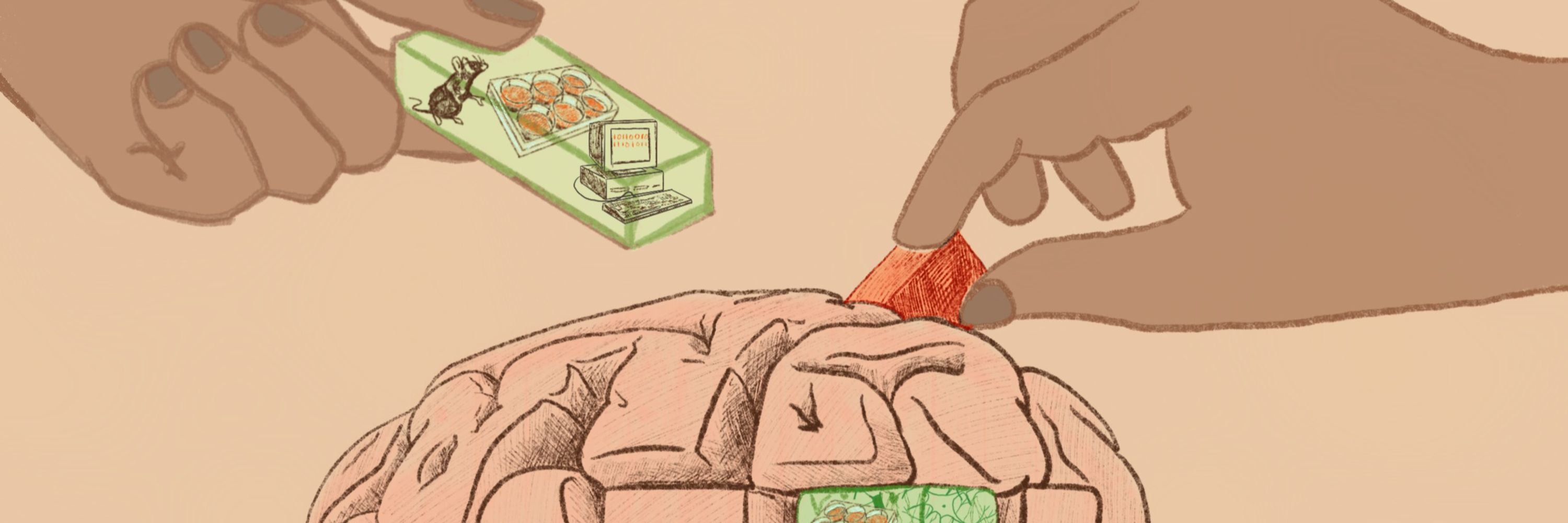
Winston Hide
@winhide.bsky.social
Systems translational bioinformatics.
Pinned
Winston Hide
@winhide.bsky.social
· Oct 3
Thrilled to share that our paper “Molecular hallmarks of excitatory and inhibitory neuronal resilience to Alzheimer’s disease” is now out in Molecular Neurodegeneration!
👉 link.springer.com/article/10.1...
#Alzheimer #Resilience #Neuroscience
👉 link.springer.com/article/10.1...
#Alzheimer #Resilience #Neuroscience

Molecular hallmarks of excitatory and inhibitory neuronal resilience to Alzheimer’s disease - Molecular Neurodegeneration
Background A significant proportion of individuals maintain cognition despite extensive Alzheimer’s disease (AD) pathology, known as cognitive resilience. Understanding the molecular mechanisms that protect these individuals could reveal therapeutic targets for AD. Methods This study defines molecular and cellular signatures of cognitive resilience by integrating bulk RNA and single-cell transcriptomic data with genetics across multiple brain regions. We analyzed data from the Religious Order Study and the Rush Memory and Aging Project (ROSMAP), including bulk RNA sequencing (n = 631 individuals) and multiregional single-nucleus RNA sequencing (n = 48 individuals). Subjects were categorized into AD, resilient, and control based on β-amyloid and tau pathology, and cognitive status. We identified and prioritized protected cell populations using whole-genome sequencing-derived genetic variants, transcriptomic profiling, and cellular composition. Results Transcriptomics and polygenic risk analysis position resilience as an intermediate AD state. Only GFAP and KLF4 expression distinguished resilience from controls at tissue level, whereas differential expression of genes involved in nucleic acid metabolism and signaling differentiated AD and resilient brains. At the cellular level, resilience was characterized by broad downregulation of LINGO1 expression and reorganization of chaperone pathways, specifically downregulation of Hsp90 and upregulation of Hsp40, Hsp70, and Hsp110 families in excitatory neurons. MEF2C, ATP8B1, and RELN emerged as key markers of resilient neurons. Excitatory neuronal subtypes in the entorhinal cortex (ATP8B+ and MEF2Chigh) exhibited unique resilience signaling through activation of neurotrophin (BDNF-NTRK2, modulated by LINGO1) and angiopoietin (ANGPT2-TEK) pathways. MEF2C+ inhibitory neurons were over-represented in resilient brains, and the expression of genes associated with rare genetic variants revealed vulnerable somatostatin (SST) cortical interneurons that survive in AD resilience. The maintenance of excitatory-inhibitory balance emerges as a key characteristic of resilience. Conclusions We have defined molecular and cellular hallmarks of cognitive resilience, an intermediate state in the AD continuum. Resilience mechanisms include preserved neuronal function, balanced network activity, and activation of neurotrophic survival signaling. Specific excitatory neuronal populations appear to play a central role in mediating cognitive resilience, while a subset of vulnerable interneurons likely provides compensation against AD-associated hyperexcitability. This study offers a framework to leverage natural protective mechanisms to mitigate neurodegeneration and preserve cognition in AD.
link.springer.com
I am honored to celebrate our publication. I work together with these future leaders in Alzheimer's research. Will AD become a controllable disease? If we can find our natural defensives and make them stronger?

October 3, 2025 at 1:54 PM
I am honored to celebrate our publication. I work together with these future leaders in Alzheimer's research. Will AD become a controllable disease? If we can find our natural defensives and make them stronger?
Thrilled to share that our paper “Molecular hallmarks of excitatory and inhibitory neuronal resilience to Alzheimer’s disease” is now out in Molecular Neurodegeneration!
👉 link.springer.com/article/10.1...
#Alzheimer #Resilience #Neuroscience
👉 link.springer.com/article/10.1...
#Alzheimer #Resilience #Neuroscience

Molecular hallmarks of excitatory and inhibitory neuronal resilience to Alzheimer’s disease - Molecular Neurodegeneration
Background A significant proportion of individuals maintain cognition despite extensive Alzheimer’s disease (AD) pathology, known as cognitive resilience. Understanding the molecular mechanisms that protect these individuals could reveal therapeutic targets for AD. Methods This study defines molecular and cellular signatures of cognitive resilience by integrating bulk RNA and single-cell transcriptomic data with genetics across multiple brain regions. We analyzed data from the Religious Order Study and the Rush Memory and Aging Project (ROSMAP), including bulk RNA sequencing (n = 631 individuals) and multiregional single-nucleus RNA sequencing (n = 48 individuals). Subjects were categorized into AD, resilient, and control based on β-amyloid and tau pathology, and cognitive status. We identified and prioritized protected cell populations using whole-genome sequencing-derived genetic variants, transcriptomic profiling, and cellular composition. Results Transcriptomics and polygenic risk analysis position resilience as an intermediate AD state. Only GFAP and KLF4 expression distinguished resilience from controls at tissue level, whereas differential expression of genes involved in nucleic acid metabolism and signaling differentiated AD and resilient brains. At the cellular level, resilience was characterized by broad downregulation of LINGO1 expression and reorganization of chaperone pathways, specifically downregulation of Hsp90 and upregulation of Hsp40, Hsp70, and Hsp110 families in excitatory neurons. MEF2C, ATP8B1, and RELN emerged as key markers of resilient neurons. Excitatory neuronal subtypes in the entorhinal cortex (ATP8B+ and MEF2Chigh) exhibited unique resilience signaling through activation of neurotrophin (BDNF-NTRK2, modulated by LINGO1) and angiopoietin (ANGPT2-TEK) pathways. MEF2C+ inhibitory neurons were over-represented in resilient brains, and the expression of genes associated with rare genetic variants revealed vulnerable somatostatin (SST) cortical interneurons that survive in AD resilience. The maintenance of excitatory-inhibitory balance emerges as a key characteristic of resilience. Conclusions We have defined molecular and cellular hallmarks of cognitive resilience, an intermediate state in the AD continuum. Resilience mechanisms include preserved neuronal function, balanced network activity, and activation of neurotrophic survival signaling. Specific excitatory neuronal populations appear to play a central role in mediating cognitive resilience, while a subset of vulnerable interneurons likely provides compensation against AD-associated hyperexcitability. This study offers a framework to leverage natural protective mechanisms to mitigate neurodegeneration and preserve cognition in AD.
link.springer.com
October 3, 2025 at 1:51 PM
I am honored to celebrate our publication. I work together with these future leaders in Alzheimer's research. Will AD become a controllable disease? If we can find our natural defensives and make them stronger?
Time to better understand the actual challenges. We will open new ideas!
Join us. #FOGBoston
June 25 13:50 hrs Festival of Genomics.
Comments? Ideas? Message me
Join us. #FOGBoston
June 25 13:50 hrs Festival of Genomics.
Comments? Ideas? Message me
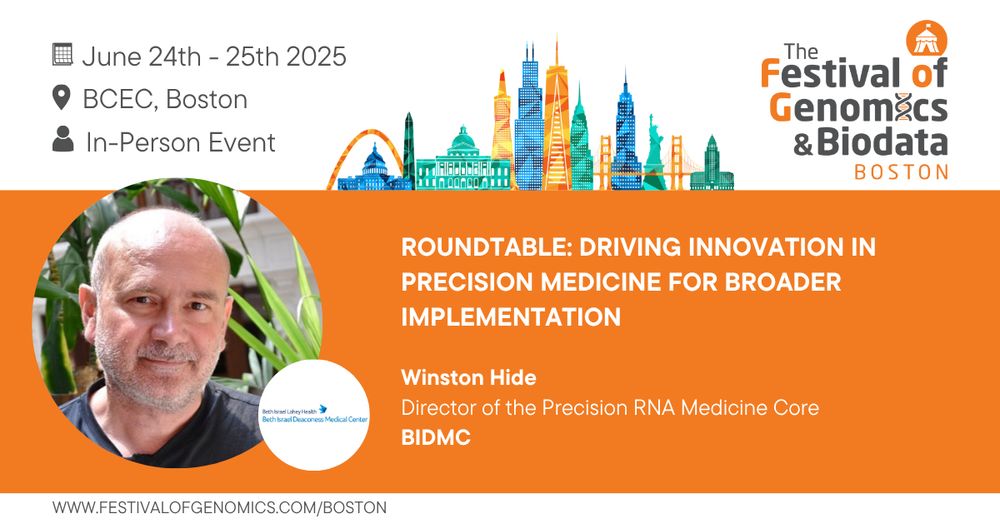
June 24, 2025 at 12:04 PM
Time to better understand the actual challenges. We will open new ideas!
Join us. #FOGBoston
June 25 13:50 hrs Festival of Genomics.
Comments? Ideas? Message me
Join us. #FOGBoston
June 25 13:50 hrs Festival of Genomics.
Comments? Ideas? Message me
Thrilled. Why? Because Peter was supported by SANBi to start this journey 25 or so years ago?
My first funded grant has been one researching novel meningitis diagnostics with partners from INRB in the DRC. The research site is in Goma, now in territory controlled by M23, and I'm proud to report that my colleagues in Goma are still running a meningitis sample referral and diagnostics network!
June 19, 2025 at 4:29 PM
Thrilled. Why? Because Peter was supported by SANBi to start this journey 25 or so years ago?
#rnasociety.bsky.social
Real honour to get to present to the African RNA Salon - upcoming RNA biologists across Africa interested in translational RNA medicine. Qs: How can RNA technology impact public health in resource poor communities? Qs: is something as simple as refrigeration a show stopper?
Real honour to get to present to the African RNA Salon - upcoming RNA biologists across Africa interested in translational RNA medicine. Qs: How can RNA technology impact public health in resource poor communities? Qs: is something as simple as refrigeration a show stopper?
June 13, 2025 at 3:38 PM
#rnasociety.bsky.social
Real honour to get to present to the African RNA Salon - upcoming RNA biologists across Africa interested in translational RNA medicine. Qs: How can RNA technology impact public health in resource poor communities? Qs: is something as simple as refrigeration a show stopper?
Real honour to get to present to the African RNA Salon - upcoming RNA biologists across Africa interested in translational RNA medicine. Qs: How can RNA technology impact public health in resource poor communities? Qs: is something as simple as refrigeration a show stopper?
Reposted by Winston Hide
Latest @garymarcus.bsky.social is a great explainer about why LLMs (will always) hallucinate.
garymarcus.substack.com/p/why-do-lar...
garymarcus.substack.com/p/why-do-lar...
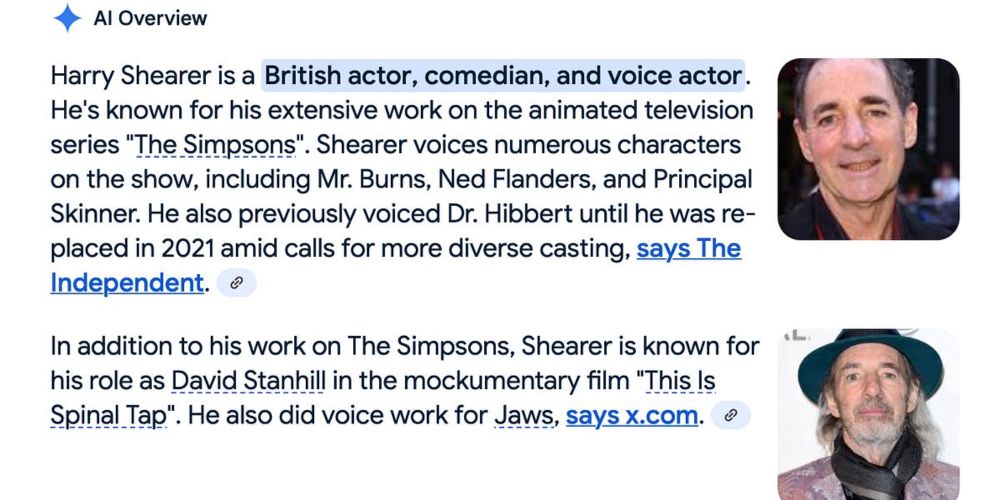
Why DO large language models hallucinate?
The Henrietta Chronicles continue, guest starring Harry Shearer
garymarcus.substack.com
May 8, 2025 at 12:31 PM
Latest @garymarcus.bsky.social is a great explainer about why LLMs (will always) hallucinate.
garymarcus.substack.com/p/why-do-lar...
garymarcus.substack.com/p/why-do-lar...
Reposted by Winston Hide
Brain tissue artificially expanded to show how neurons wire together @nature.com
www.nature.com/articles/s41...
www.nature.com/articles/d41...
www.nature.com/articles/s41...
www.nature.com/articles/d41...
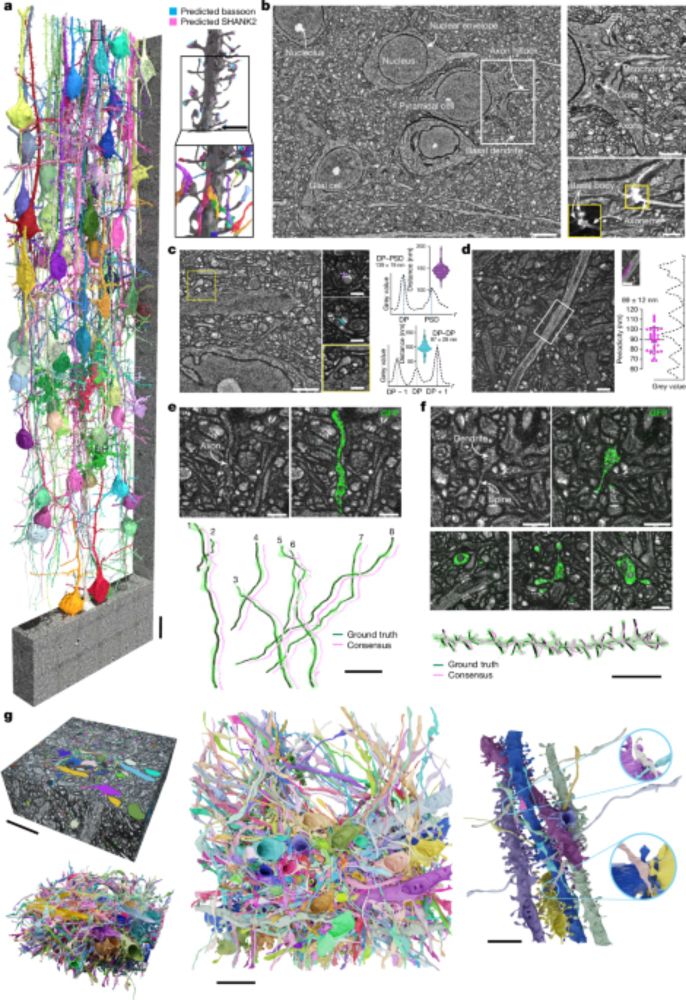
Light-microscopy-based connectomic reconstruction of mammalian brain tissue - Nature
A technique called LICONN (light-microscopy-based connectomics) allows mapping of brain tissue at synapse level and simultaneous measurement of molecular information, thus enabling quantification of c...
www.nature.com
May 8, 2025 at 7:21 PM
Brain tissue artificially expanded to show how neurons wire together @nature.com
www.nature.com/articles/s41...
www.nature.com/articles/d41...
www.nature.com/articles/s41...
www.nature.com/articles/d41...
@iscb.bsky.social In depth African Bioinformatics at #ASCB2025 Cape Town. Honoured to see fruits of early days of Cap_dev bioinformatics in Africa! Best practice prevails. Come join us - we seek researchers as interns and for post doctoral training. research.bidmc.org/winston-hide

April 15, 2025 at 10:04 AM
@iscb.bsky.social In depth African Bioinformatics at #ASCB2025 Cape Town. Honoured to see fruits of early days of Cap_dev bioinformatics in Africa! Best practice prevails. Come join us - we seek researchers as interns and for post doctoral training. research.bidmc.org/winston-hide
superb experience to be embedded in great science with our next generation of leaders @isabelscst.bsky.social
#ADPD2025 was exhausting 😴 but so thrilling 🤩 The discussions really energized me! ⚡🔋
I got to chat w/ collaborators, mentors & promising students. 💬
And the city of Vienna is beautiful!! 🏛️👑🎻🖼️
I returned to Boston feeling inspired, creative & motivated. 💪🏻🙌🏻
In the pic w/ PI @winhide.bsky.social
I got to chat w/ collaborators, mentors & promising students. 💬
And the city of Vienna is beautiful!! 🏛️👑🎻🖼️
I returned to Boston feeling inspired, creative & motivated. 💪🏻🙌🏻
In the pic w/ PI @winhide.bsky.social

April 15, 2025 at 9:57 AM
superb experience to be embedded in great science with our next generation of leaders @isabelscst.bsky.social
With just a few words - human chronic disease exposed through diet?
African Diet Reverses Inflammation in Just Two Weeks While Western Foods Trigger Disease Markers
Switching from a traditional African diet to Western food for just two weeks triggered inflammation, weakened immune responses, and activated disease-related processes in healthy men, according to…
Switching from a traditional African diet to Western food for just two weeks triggered inflammation, weakened immune responses, and activated disease-related processes in healthy men, according to…

African Diet Reverses Inflammation in Just Two Weeks While Western Foods Trigger Disease Markers
Switching from a traditional African diet to Western food for just two weeks triggered inflammation, weakened immune responses, and activated disease-related processes in healthy men, according to groundbreaking research published in Nature Medicine. Conversely, urban dwellers who adopted a traditional plant-based African diet saw remarkable anti-inflammatory benefits. The study, conducted by researchers from Radboud University Medical Center and KCMC University in Tanzania, provides the first comprehensive look at how quickly dietary changes can impact our immune system and metabolism, with potential long-term consequences for chronic disease risk.
scienceblog.com
April 3, 2025 at 1:41 PM
With just a few words - human chronic disease exposed through diet?
#adpd2025 insights into the Alzheimer’s continuum. 4/4/25 @19:25 @pouryany.bsky.social will present our new approach to discovering validated targets for AD therapy
April 3, 2025 at 7:17 AM
#adpd2025 insights into the Alzheimer’s continuum. 4/4/25 @19:25 @pouryany.bsky.social will present our new approach to discovering validated targets for AD therapy
Reposted by Winston Hide
You know about the PAN-GO #Functionome, but have you explored the power of the Functional Category search? Learn how to find #humangenes of interest in just a few clicks, using the Functional Categories
community.alliancegenome.org/t/8362
🧬🧪 #GOSlims
ICYMI: community.alliancegenome.org/t/8343
community.alliancegenome.org/t/8362
🧬🧪 #GOSlims
ICYMI: community.alliancegenome.org/t/8343
March 12, 2025 at 11:17 PM
You know about the PAN-GO #Functionome, but have you explored the power of the Functional Category search? Learn how to find #humangenes of interest in just a few clicks, using the Functional Categories
community.alliancegenome.org/t/8362
🧬🧪 #GOSlims
ICYMI: community.alliancegenome.org/t/8343
community.alliancegenome.org/t/8362
🧬🧪 #GOSlims
ICYMI: community.alliancegenome.org/t/8343
Reposted by Winston Hide
Come join our adventure @sangerinstitute.bsky.social 👇🏾
We're recruiting!
➡️ (Senior) bioinformatician: join a collaborative project with @mhaniffa.bsky.social and Mo Lotfollahi, supporting the analysis of single-cell and spatial transcriptomics studies to train AI-based foundation models
Apply by 25 March
sanger.wd103.myworkdayjobs.com/en-US/Wellco...
➡️ (Senior) bioinformatician: join a collaborative project with @mhaniffa.bsky.social and Mo Lotfollahi, supporting the analysis of single-cell and spatial transcriptomics studies to train AI-based foundation models
Apply by 25 March
sanger.wd103.myworkdayjobs.com/en-US/Wellco...

March 20, 2025 at 8:12 AM
Come join our adventure @sangerinstitute.bsky.social 👇🏾
Reposted by Winston Hide
The University of Oxford is seeking two Research Assistants with an interest in brain ageing research, dementia or cognitive disorders. Closing date: 10th April.
www.dementiaresearcher.nihr.ac.uk/job/research...
www.dementiaresearcher.nihr.ac.uk/job/research...

Research Assistant: Cognitive Neurology
The University of Oxford is seeking two Research Assistants with an interest in brain ageing research, dementia or cognitive disorders.
www.dementiaresearcher.nihr.ac.uk
March 20, 2025 at 11:03 AM
The University of Oxford is seeking two Research Assistants with an interest in brain ageing research, dementia or cognitive disorders. Closing date: 10th April.
www.dementiaresearcher.nihr.ac.uk/job/research...
www.dementiaresearcher.nihr.ac.uk/job/research...
Reposted by Winston Hide
Interested in doing a sabbatical at EMBL, at one of its 6 sites in Barcelona, Cambridge, Grenoble, Hamburg, Heidelberg or Rome?
Funding call with deadline 15 June, decisions in July.
www.embl.org/about/info/s...
Funding call with deadline 15 June, decisions in July.
www.embl.org/about/info/s...
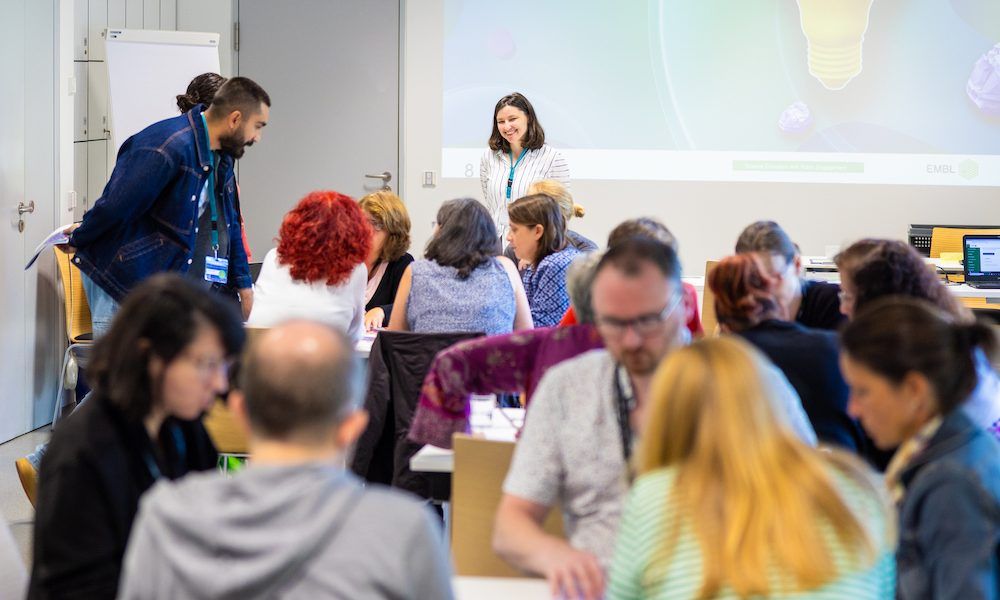
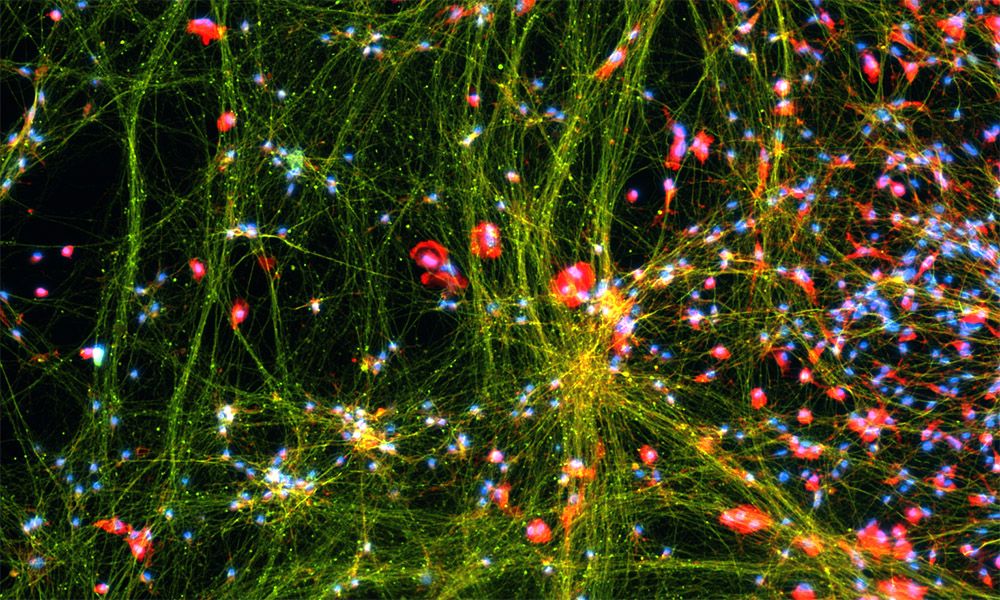
March 19, 2025 at 5:31 PM
Interested in doing a sabbatical at EMBL, at one of its 6 sites in Barcelona, Cambridge, Grenoble, Hamburg, Heidelberg or Rome?
Funding call with deadline 15 June, decisions in July.
www.embl.org/about/info/s...
Funding call with deadline 15 June, decisions in July.
www.embl.org/about/info/s...
Due recognition. Cannot express my joy in seeing nature publish the pioneering role of Alan Christoffels and the South African National Bioinformatics institute in African capacity development. I started SANBI. Alan was one of our first graduates!
doi: doi.org/10.1038/d441...
doi: doi.org/10.1038/d441...
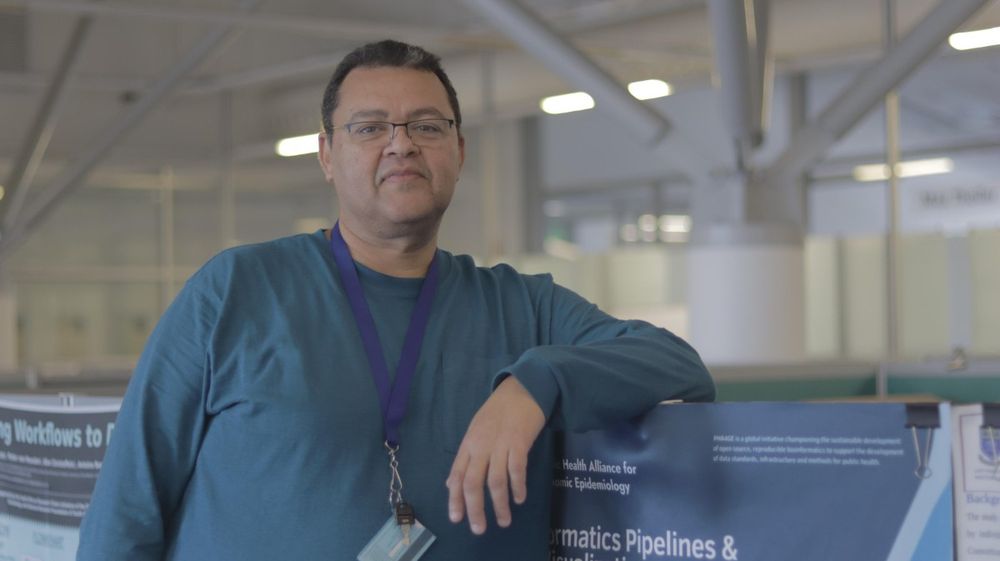
Alan Christoffels: Building bioinformatics in Africa
The leader of SANBI on efforts to address skills shortages and the lack of diversity
doi.org
March 19, 2025 at 2:26 PM
Due recognition. Cannot express my joy in seeing nature publish the pioneering role of Alan Christoffels and the South African National Bioinformatics institute in African capacity development. I started SANBI. Alan was one of our first graduates!
doi: doi.org/10.1038/d441...
doi: doi.org/10.1038/d441...
Reposted by Winston Hide
"The reality became clear: Ice detention isn’t just a bureaucratic nightmare. It’s a business. These facilities are privately owned and run for profit."

March 19, 2025 at 1:14 PM
"The reality became clear: Ice detention isn’t just a bureaucratic nightmare. It’s a business. These facilities are privately owned and run for profit."
Reposted by Winston Hide
#IChoseUWC Social Media Competition Winners 🏆 Thank you for sharing your unique stories with us! #IAmUWC
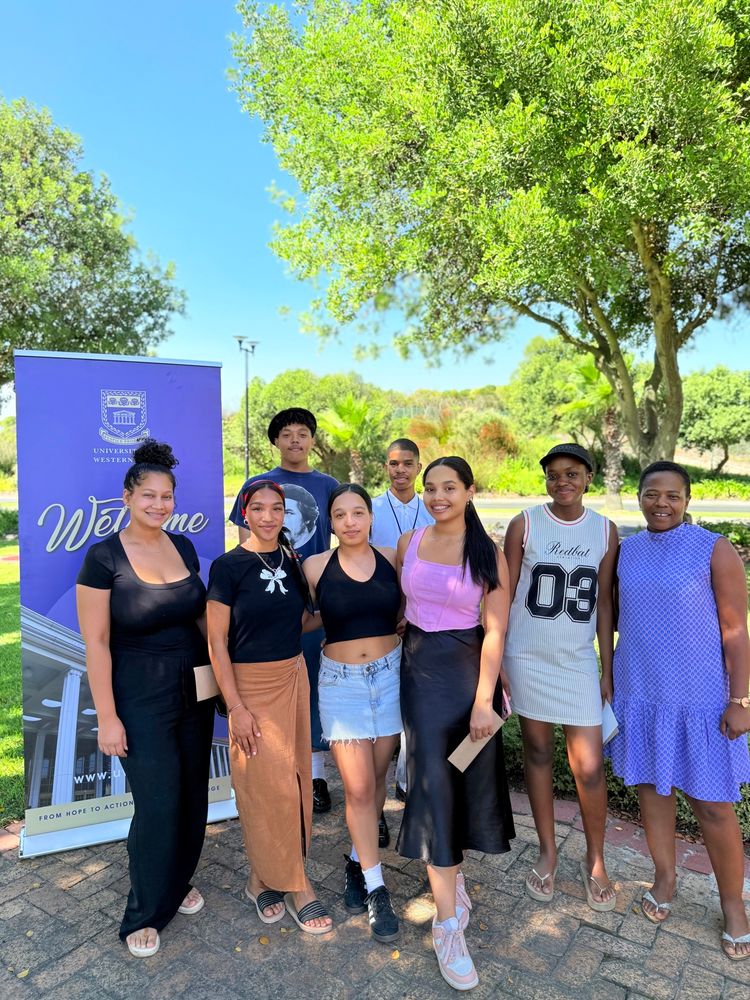


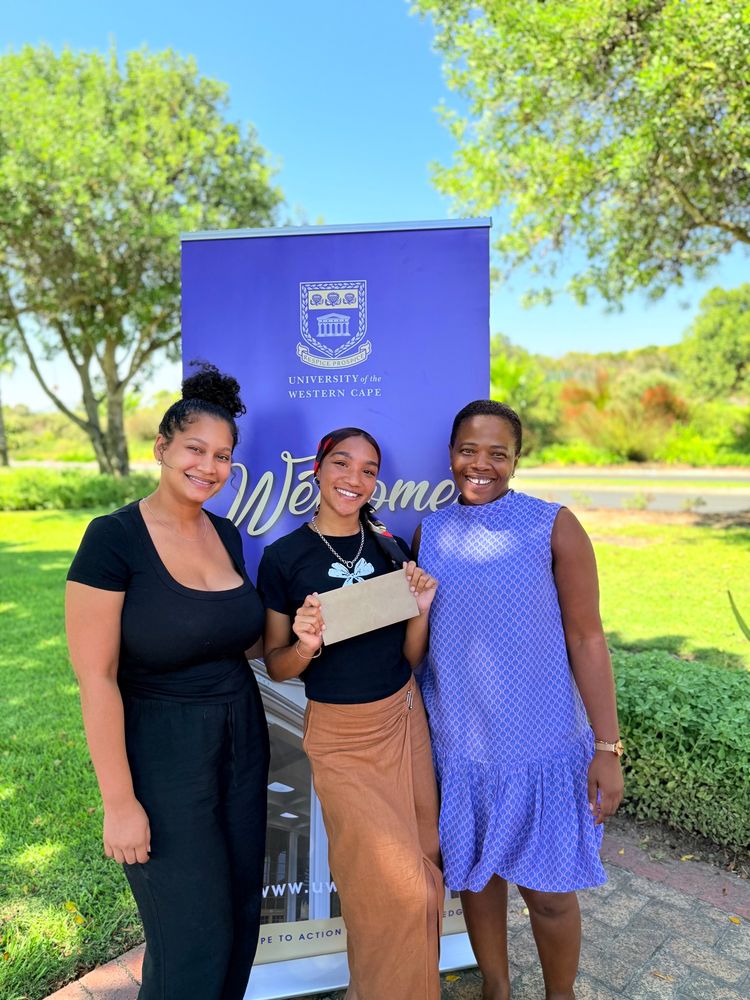
March 19, 2025 at 1:58 PM
#IChoseUWC Social Media Competition Winners 🏆 Thank you for sharing your unique stories with us! #IAmUWC
Working at the forefront of human disease RNA medicine is amazing. Watching what is possible. ‘The art of the possible’ becomes ‘the art of resilience’. You can’t stop the tide. You can’t hide truth.
mRNA vaccines are the biggest breakthrough in disease prevention and treatment in decades. We're curing *cancer* with mRNA vaccines. To eliminate research in this field, at this moment, is fall-of-the-empire-grade stuff.
Exclusive: NIH officials have advised scientists to remove reference to mRNA vaccines from their grant applications, in expectation the Trump administration intends to abandon most research in the field.
By @arthurallen202.bsky.social
kffhealthnews.org/news/article...
By @arthurallen202.bsky.social
kffhealthnews.org/news/article...
March 17, 2025 at 1:11 PM
Working at the forefront of human disease RNA medicine is amazing. Watching what is possible. ‘The art of the possible’ becomes ‘the art of resilience’. You can’t stop the tide. You can’t hide truth.
Reposted by Winston Hide
i honestly have never seen a political leader so thoroughly destroy their credibility so quickly and, on the other side, it is abundantly clear that if anyone can claim a genuine leadership of large parts of the democratic party, it is AOC.
Folks is it good when your own party's leadership in the House is dropping "listen to the women" and MLK quotes on you while swing state members of your caucus are talking about new leadership
March 14, 2025 at 5:07 PM
i honestly have never seen a political leader so thoroughly destroy their credibility so quickly and, on the other side, it is abundantly clear that if anyone can claim a genuine leadership of large parts of the democratic party, it is AOC.
Reposted by Winston Hide
An account of what killing PEPFAR will do to S Africa
www.spotlightnsp.co.za/2025/03/13/i...
www.spotlightnsp.co.za/2025/03/13/i...

In-depth | How much does our HIV response depend on US funding?
After the US slashed global aid, the South African government stated that only 17% of its HIV spending relied on US funding. But some experts argue that US health initiatives had more bang for buck th...
www.spotlightnsp.co.za
March 14, 2025 at 7:33 AM
An account of what killing PEPFAR will do to S Africa
www.spotlightnsp.co.za/2025/03/13/i...
www.spotlightnsp.co.za/2025/03/13/i...
Reposted by Winston Hide
New @science.org
On the US-Canada deep collaborations and partnership in science that absolutely need to be preserved despite "contemptuous musings on annexation to a tariff war"
science.org/doi/10.1126/...
On the US-Canada deep collaborations and partnership in science that absolutely need to be preserved despite "contemptuous musings on annexation to a tariff war"
science.org/doi/10.1126/...
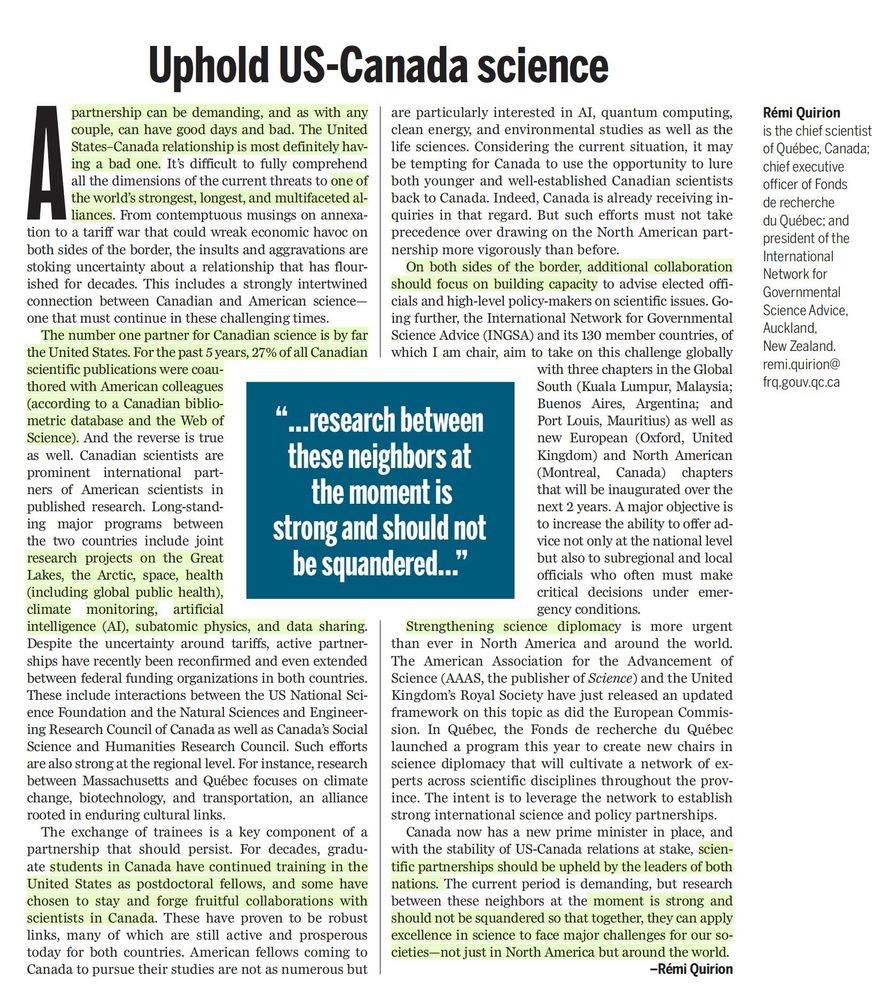
March 13, 2025 at 6:15 PM
New @science.org
On the US-Canada deep collaborations and partnership in science that absolutely need to be preserved despite "contemptuous musings on annexation to a tariff war"
science.org/doi/10.1126/...
On the US-Canada deep collaborations and partnership in science that absolutely need to be preserved despite "contemptuous musings on annexation to a tariff war"
science.org/doi/10.1126/...
Reposted by Winston Hide
Congrats to Natalia Benetti @nataliabenetti.bsky.social of the Mundlos lab, who has received a @ec.europa.eu Marie Skłodowska-Curie Actions Postdoctoral Fellowship! In her project SynLncRNAs, Natalia will use synthetic biology to uncover mechanisms of gene regulation by long non-coding RNAs in vivo.

March 13, 2025 at 10:01 AM
Congrats to Natalia Benetti @nataliabenetti.bsky.social of the Mundlos lab, who has received a @ec.europa.eu Marie Skłodowska-Curie Actions Postdoctoral Fellowship! In her project SynLncRNAs, Natalia will use synthetic biology to uncover mechanisms of gene regulation by long non-coding RNAs in vivo.
Great to see true vision in person.
I will soon become the Executive Director of @embl.org, leading EMBL with Peer Bork whilst EMBL finds its next Director General, my colleague, Jo McEntyre will become @ebi.embl.org's Interim Director. Jo's leadership and experience means I am confident EMBL-EBI will flourish over this time
📣 EMBL-EBI leadership update
Jo McEntyre will step into the role of Interim Director of EMBL-EBI, as Ewan Birney transitions to a new position as Executive Director of EMBL following Edith Heard’s upcoming departure.
www.ebi.ac.uk/about/news/a...
Jo McEntyre will step into the role of Interim Director of EMBL-EBI, as Ewan Birney transitions to a new position as Executive Director of EMBL following Edith Heard’s upcoming departure.
www.ebi.ac.uk/about/news/a...
March 13, 2025 at 6:53 PM
Great to see true vision in person.
March 13, 2025 at 2:42 AM

